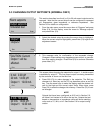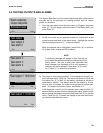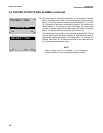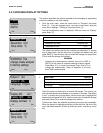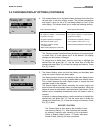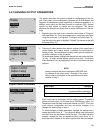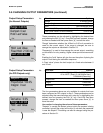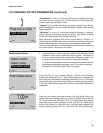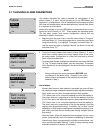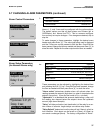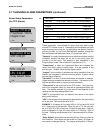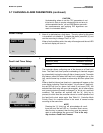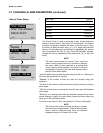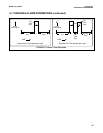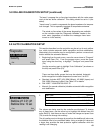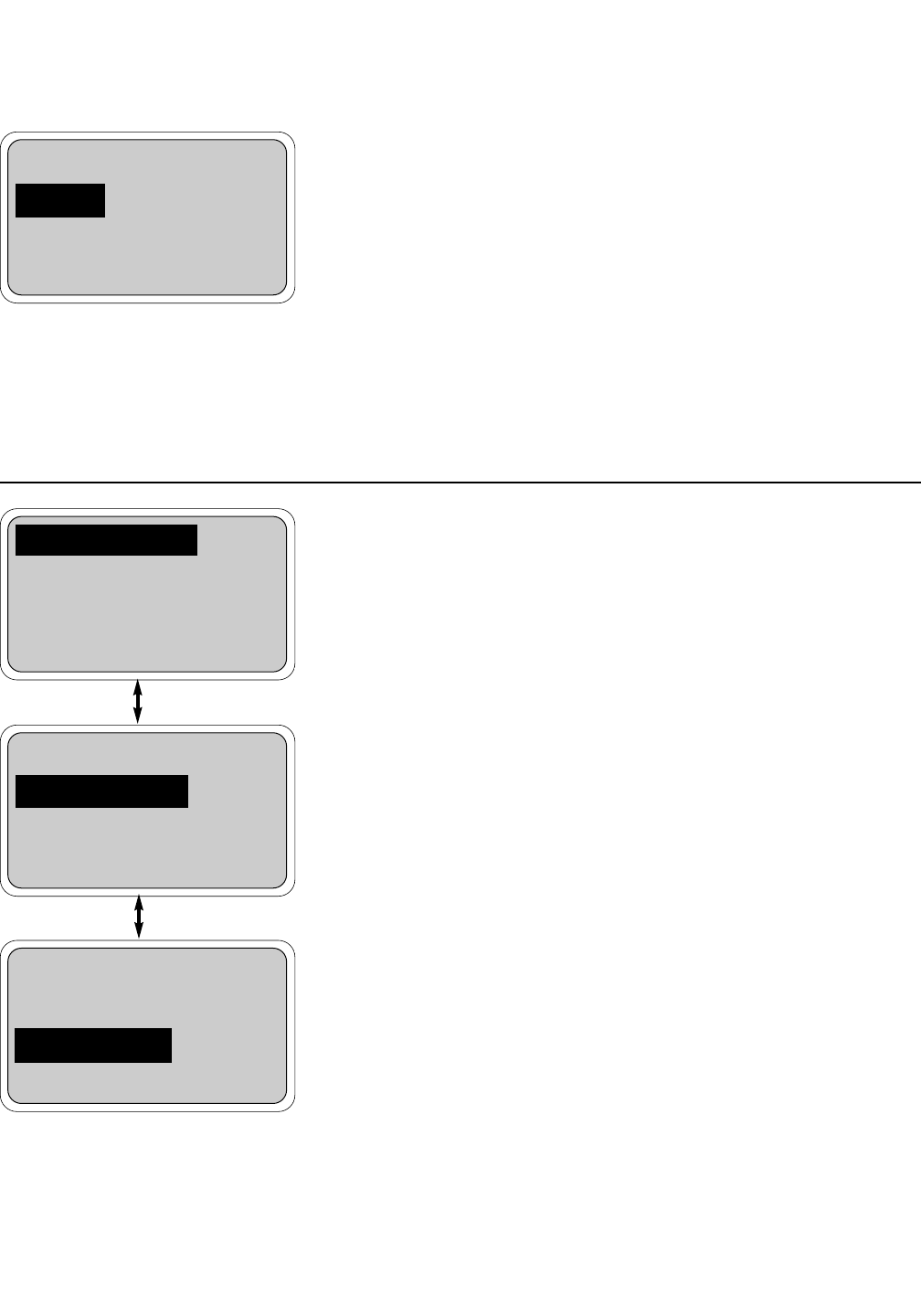
36
MODEL 54e pH/ORP SECTION 5.0
SOFTWARE CONFIGURATION
5.7 CHANGING ALARM PARAMETERS
This section describes the options available for configuration of the
alarms. Alarms 1, 2, and 3 can be activated on pH (or ORP/Redox, see
Appendix A), or temperature. One of these alarms can be setup as a feed
limit timer and another alarm can be dedicated as an interval timer. Alarm
4 is reserved as a fault alarm.
Alarms that activate on pH (or ORP/Redox) or temperature can be con-
figured as on/off (normal), or TPC. These modes are described below.
The two alarm modes have several configuration options that are
described in detail in this section.
1. Beginning from the main menu, move the cursor down to "Program"
and press Enter 4. From the program menu, move the cursor down
using the arrow key b to highlight "Configure" and press Enter 4.
Use the arrow key again to highlight "Alarms" (as shown on the left)
and press Enter 4.
2. There are 9 menu headers that relate to alarms. Alarms 1, 2, and 3
each have a control header and a setup header. Alarm 4 has a sim-
ple setup header. Configuration of a feed limit timer and an interval
timer is also described here.
To access each header, highlight the desired item and press the Enter
4 key. To select another header, use the arrow keys. The bottom
menu header will only be highlighted if the end of the menu has been
reached.
NOTE
Always configure the control parameters BEFORE mak-
ing changes in the alarm setup. Changes in the output
setup in step 4 will depend on the options that have been
selected in step 3.
Alarm Modes:
Normal: Alarm turns on when setpoint is exceeded and turns off when
the reading no longer exceeds the setpoint (simple high alarm example).
Fault: Alarm turns on when controller detects a fault condition.
TPC: Alarm turns on for a time that depends on what the reading is.
The time it stays on is proportional to how far the reading is from the
0% On Time point, also called the setpoint. (time proportional control)
TPC: Alarm turns on for a time that depends on what the reading is.
The time it stays on is proportional to how far the reading is from the
setpoint (time proportional control). In addition, the "on time" can be
dependent on how long the reading has exceeded the setpoint (inte-
gral control) and how fast the reading has actually changed (deriva-
tive control).
Feed limit timer: When the alarm has been energized (on) for a long
period, it automatically turns off to prevent overfeeding of chemicals.
Interval timer: Alarm is programmed to activate at various times, usu-
ally to provide automated cleaning. Useful for spray cleaning and/or
automatic retraction of sensors in processes.
Alarm 1 control
Alarm 1 setup
Alarm 2 control
Exit Enter
Outputs
Alarms
Security
Exit Enter
Alarm 2 setup
Alarm 3 control
Alarm 3 setup
Exit Enter
Alarm 4 setup
Feed limit timer
Interval timer
Exit Enter



